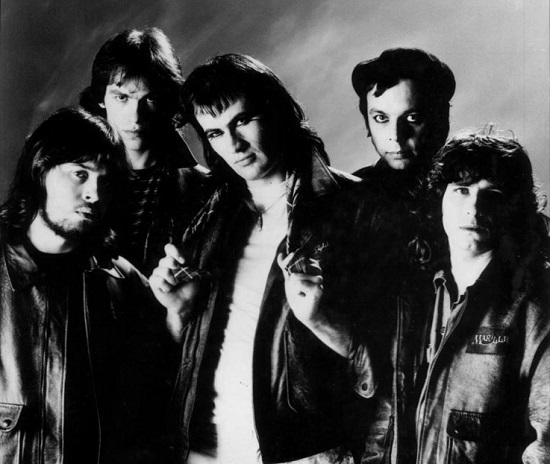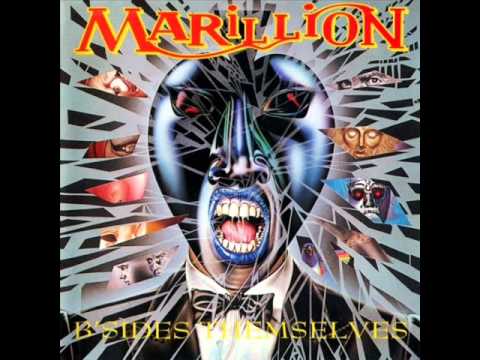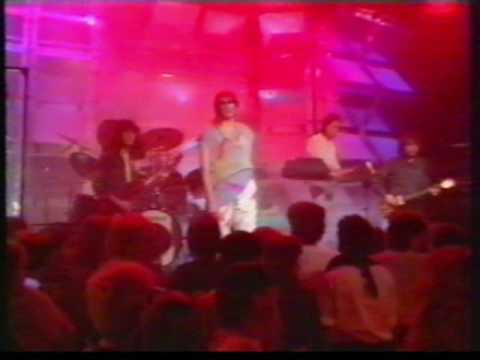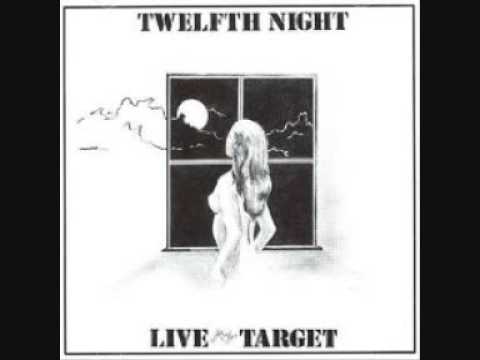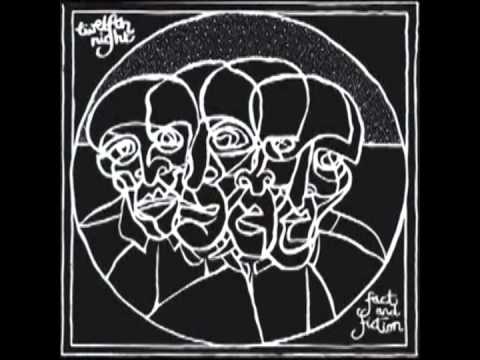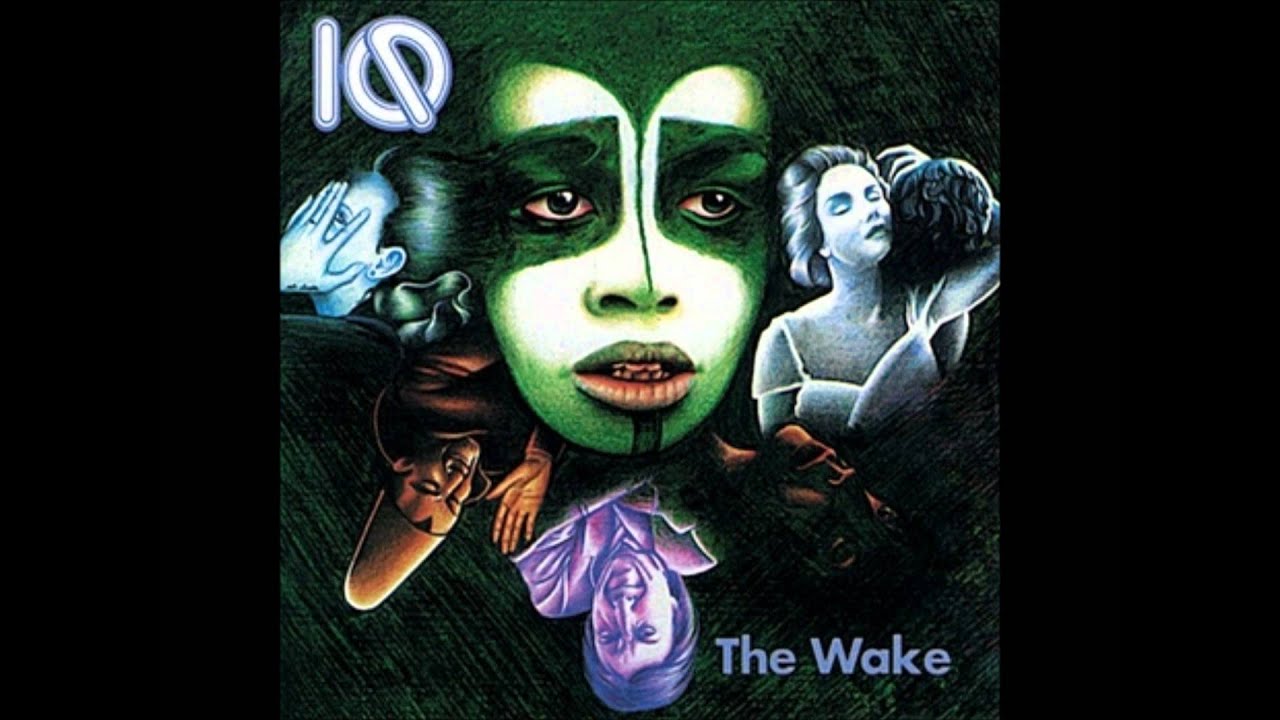It’s sometimes said that your friends are just the people who got to you first. But I think this might be even truer for music.
In 1985, a band I’d followed from their first release achieved mainstream success, scoring two top five singles and a number one album in the UK. In the context of the times, their presence in the charts was gloriously anomalous, because as far as the critical establishment was concerned, the type of music they played had been consigned to the dustbin of history. The band was Marillion and that chart-topping album was Misplaced Childhood.
Marillion were at the forefront of what has become known as the neo-prog scene, a 1980s-based revival of the progressive rock template of the previous decade. Other key bands in this scene included Twelfth Night, Pallas, IQ and Pendragon, all of whom would go on to release records on major labels (when this was still seen as a badge of honour rather than a wretched capitulation to the Man), but would conspicuously fail to match Marillion’s success.
In the mid-80s the return of progressive rock was met with a combination of horror and confusion by the music press. The victories of the punk wars were still fresh in writers’ memories, and prog was the symbolic monster that the knock-kneed knights of the No Future generation had supposedly slain. Surely no one mourned its passing? Yet here it was again, rising from the dead like some mangy hydra, smeared in grease paint with a stack of dog-eared Genesis albums in its scaly claw.
Why the fuss? Marillion aside, there was never any serious danger of neo-prog upsetting the post punk and new pop consensus. It was just one of a number of underground scenes at the time, and it wouldn’t be until the late 90s, specifically with the release of Radiohead’s OK Computer, that prog would properly begin to infiltrate the mainstream again. But its mere existence clearly irked the cultural taste-makers. What did these people think they were doing?
I might well have asked myself the same question. Coming of age musically in the early 80s was a pretty exciting place to be, certainly in retrospect. Seemingly every week, a great new song would come along – ‘Enola Gay’, ‘Reward’, ‘Tainted Love’, ‘Party Fears Two’… But why secretly? Well, it’s complicated, but having been brought up on classic rock (thanks to my older brother) and being prissily conservative and self-policing in that weird adolescent way, I had convinced myself that ‘real’ music meant guitars, riffs and balls-in-a-vice vocals.
As a result, I had inevitably found myself gravitating towards metal and the tail-end of the NWOBHM. I loved Priest, Sabbath, Budgie and some of the newer bands such as Diamond Head. But I was starting to crave something more, something that catered for my expanding horizons (Hawkwind! Pink Floyd!) and blossoming as a jumped-up little know-it-all. And so, as I sat in my Rodney Matthews poster-festooned bedroom listening to Tommy Vance’s Friday Rock Show and heard Marillion’s debut single ‘Market Square Heroes’, I knew I had found what I was looking for…
(Incidentally, while John Peel is rightly, if somewhat hagiographically, revered as the man who provided a vital platform for alternative music in this country, Tommy Vance deserves much greater recognition for providing a similar service to those of us with more rock-inclined tastes. The Friday Rock Show was just as instrumental as Peel’s programmes in breaking new music and nurturing scenes that nobody else was covering.)
Of course, I’d already been primed to like Marillion, having read about them in Kerrang! and been intrigued by the big Scottish bloke with a painted face talking about scaring debs at Cambridge balls. Just as well, because ‘Market Square Heroes’ wasn’t a particularly great song even then, bouncing along in an ingratiating, over-eager to please way. And compared to those secret crushes I mentioned before, it was pallid fare indeed. But it didn’t matter – here was something new I could make my own and run with.
It soon became apparent that there were other bands operating in a similar area to Marillion, and they were all quickly uploaded to my mental inventory – ooh look, IQ are playing The Pink Toothbrush in Rayleigh, and there’s an interview with Twelfth Night in Sounds! The fact that I hadn’t even heard these bands at the time was irrelevant, because this was the scene I’d pinned my colours to. I knew it was horribly unfashionable even then, but of course, that was part of the attraction.
But where had the scene come from and why? In simple terms, prog had never really gone away. While punk had crystallised many writers hatred for the genre and had made toxic the very term ‘progressive’, most of the big names were relatively unaffected by the supposed Year Zero of 1977: Yes released one of their most commercially successful albums with Going For The One; ELP had a number two single with ‘Fanfare For The Common Man’; and Pink Floyd took punk on at its own game with the scathing Animals. And while much of prog’s dead brush had indeed been burnt away, its roots were still intact, with many of the neo-prog bands having their origins in the late 70s.
It took a while for the next wave to take off though. One theory says that it was the NWOBHM itself that held neo-prog back, with many of the technically skilled musicians who would have naturally gone in a progressive direction instead funnelling their proficiency into this faster, more challenging strain of metal – for instance, the first Iron Maiden album is as proggy as hell in places, just minus the keyboards. But it’s more likely that it just took a few years for a groundswell of demand to grow again.
By 1983, the year when neo-prog started to come into its own, there really wasn’t anybody else doing the kind of extended, complex, heavy concept songs that were Marillion et al’s stock in trade. King Crimson had reformed, but as a new wave gamelan funk ensemble; Yes returned with the slick AOR of ‘Owner Of A Lonely Heart’; Pink Floyd bowed out with the monochromatic gloom of The Final Cut; and Genesis prepared to unleash the stinging social commentary of ‘Illegal Alien’. (Though to be fair, they released the bonkers ‘Mama’ first).
There will always be a type of young (and not so young) music fan who equates long, meandering instrumental passages and tricksy time signatures with profundity, and I guess I was one of them. We were the ones who wanted content in our music, but were too intimidated by post punk’s overcoat brigade and not cool enough for the Rough Trade bands. We were the self-consciously clever kids in our rubbish camouflage jackets and Marks & Spencer jeans, scared to dance but always ready to discuss our favourite Michael Moorcock novels.
I think that pretty much summed up most of the bands too, certainly judging by their names, with references to fantasy and myth (Marillion, Pallas, Pendragon), allusions to high culture (Twelfth Night), and show-off braininess (IQ). These people clearly weren’t interested in being ‘cool’ (at least not yet), but they weren’t stupid – while characterised as just slavishly reproducing the sounds of their prog forebears, a fairly small gene pool of bands at that, it took some guts (and just a touch of self-importance) to be unashamedly making this type of music in the era of leg warmers, bubble perms and Gary Davies.
OK, but was it any good? Well, there’s the rub. There’s stuff I liked at the time that I’d struggle to sit through now, though I guess that goes for a lot of people’s initial musical enthusiasms (unless you’re one of those insufferable types who spent their first record voucher on Hatful Of Hollow). But as I intimated at the start, the music you get into at a certain point of receptivity/vulnerability in your life tends to stay with you forever. That doesn’t mean you suspend judgement on it – instead, you subconsciously filter out the crap over time until just the refined essence is left, those albums and songs that have survived your mental cull.
What follows is an entirely subjective look at the main bands through the scrying glass of my adolescence, highlighting where they’d got to by 1985, and what I think is still worth lending an ear to…
Marillion
Marillion weren’t the first of the neo-prog bands (that honour goes to either Pallas or Twelfth Night), but they certainly had the biggest impact. Much of this was down to the presence in their ranks of one Derek Dick aka Fish, a man not only driven to succeed, but who also possessed the necessary combination of charisma and chutzpah to inspire belief in an audience. The fact that he sang on the edge of his range most of the time, squawking like a constipated parrot, was neither here nor there.
While other bands had issued records independently before them, Marillion were the first to sign to a major (EMI), and so benefited from having a proper promotional machine behind them, helping ‘Market Square Heroes’ to reach a respectable number 60 in the charts. I had dutifully bought it, despite not being a big fan of the A-side. However, the B-sides were much more like it, in particular the track ‘Three Boats Down From The Candy’, its sinister undertow punctuated with pleasing passages of bombast. It was also relatively short and to the point, unlike ‘Grendel’, the 18 minute epic that took up the second side of the 12” single. For the most part, the neo-prog bands eschewed the fantastical subject matters of the 1970s (I’m looking at you Yes), but here, Marillion let it all hang out, and at the age of 14, I loved it. On re-listening, I’m less enthusiastic, but even though I now get all the Genesis references that passed me by at the time, and some of the playing feels a bit ropey, it’s still got something, particularly the medieval balladry of the opening section.
In 1983, Marillion released their debut album Script For A Jester’s Tear, a title so strainingly awful it still brings me out in a hot sweat. But again, ten out of ten for clearly not giving a shit what anybody thought. Taylor Parkes wrote an excellent piece for tQ on the album, in which he unimprovably portrayed their sound as "the harlequin affectations and meandering frilliness of British prog, delivered like a can of piss hurled into the back of your head". But while I’d whole-heartedly endorse that description (and it’s one that could just as easily be applied to any of the neo-prog bands), I don’t necessarily view it as negative. Yes, there was an over-reliance on early digital keyboards – garishly bright compared to the warm analogue synths of yore – and the guitar tone was too bloody polite, but there was an attack and insolent sense of drama to the music that felt invigorating compared to the rest of what passed for rock at the time (certainly in the UK). I listened to Script a lot and memorised all the lyrics, even as I wondered at the painful tangle of Fish’s wordplay. (Script also cemented neo-prog’s unfortunate predilection for over-stuffing their record sleeves with pseudo-symbolic images and motifs, so freighted with ‘meaning’ that it often hurt to look at them.)
Marillion built their fanbase in a canny fashion, subtly updating and refining their sound in a way that wouldn’t alienate the faithful, but might widen their appeal. It’s a balancing act that many bands fail at, but Marillion pulled it off with some aplomb. Their longer tracks could still get bogged down with portents and digressions, but there’s an acid snappiness to ‘Punch & Judy’, the first single off second album Fugazi, that really sinks its teeth into your ear, Fish’s death-of-the-suburban-dream lyrics sounding not unlike what Damon Albarn would be peddling ten years later (and look, there’s the aforementioned Gary Davies introducing them on Top Of The Pops, right up after (secret prog fan) Nik Kershaw). And then a year later, they hit pay dirt with ‘Kayleigh’.
I remember seeing Marillion prior to their third album, and Fish pre-selling it as “moving in a direction that many fans want us to go in”, and that it had just two songs on it, “side 1 and side 2”. We all cheered heartily at this news, by now having fully bought into our role as keepers of the prog flame – of course this is what we wanted! But they were playing clever again. 1985’s Misplaced Childhood might have been an interlinked suite of songs, but it certainly wasn’t Tales From Topographic Oceans. It was in fact a very modern-sounding rock album, with the understated melodicism of Pink Floyd displacing the theatricality of Genesis as the band’s primary influence – the opening riff to ‘Kayleigh’ is pure Dave Gilmour, while the lyrical arc of the album is pretty similar to that of The Wall, albeit with a happier ending. Listening back to it, I’m struck by how confident the band now sound, and there are moments of real elegance and subtlety – unfortunately, most of these moments are marred by Fish emoting verbosely over the top of them.
Still, it was exciting to see one of ‘our’ bands doing so well in the mainstream, even if ‘Kayleigh’ and its follow-up ‘Lavender’ tasted a little bit saccharine. I’m not sure if it felt like vindication, or smelt like victory, but it had turned Marillion into a proper band, for better and for worse.
Twelfth Night
If Marillion are the neo-prog band that made it, Twelfth Night are the band that fans of a certain age still can’t quite believe didn’t. Artistically-speaking, Twelfth Night made neo-prog’s greatest contribution to music, and are the one band here that I would urge you to investigate. Described crassly, though not inaccurately, as ‘Punk Floyd’, there’s an energy and sense of challenge in their best stuff that actually transcends the neo-prog pigeonhole – they’re certainly the only band from the whole movement to approach the angry intellectual vibe of Van Der Graaf Generator, though their distinctive sound wasn’t just indebted to old school prog.
Starting off as a college band based around guitarist Andy Revell and his Gilmour/John Martyn-influenced echoplex sound, Twelfth Night quickly turned into a muscular instrumental quartet with a decent following around their home town of Reading. In fact, as they would sniffily point out, the formative Marillion would often ring them up trying to blag a support slot. In 1981, they released Live At The Target, arguably neo-prog’s first proper album. While its contents were recognisably progressive, with tips of the hat to all the usual suspects, there’s both an NWOBHM-esque aggression on display and a sound that at times recalls Factory bands such as Joy Division and the Durutti Column, all sparse delay and high-end bass. Even today, it stands up remarkably well.
But things went up a level with the recruitment of their college friend Geoff Mann as singer and conceptualist-in-chief. One of the things that defined the more prominent neo-prog bands was the presence of a charismatic frontman and lyricist in their ranks (in the tradition of Peters Gabriel and Hammill, Jon Anderson etc). Regardless of the band’s virtuosity and ability to compose really long songs, they would ultimately live or die by the quality of their singer’s shtick. On this front, Mann was exceptionally good. Not only did he possess a strong, purposefully abrasive voice, but as a wordsmith, he was miles ahead of the competition, combining erudition with genuine insight and wit. And as an artist, he gave the band a stark, faux-naïve visual identity that set them apart from the leering jesters and prancing unicorns that had become the genre’s regrettable default.
Their first, and indeed only, proper studio-based album with Mann was Fact And Fiction, released at the end of 1982. In many ways, Fact And Fiction is the Unknown Pleasures of neo-prog, sharing a sound that’s harsh and affectless, and driven by a barely suppressed mania. They also cover similar dark subject matter: urban anomie; mental breakdown; the dehumanising effects of both capitalism and technology. In particular, the urgent ‘We Are Sane’ and its nightmarish take on Orwellian thought control is a masterpiece of disquieting tonal shifts and intensely-drawn imagery. Following this with a triumphant appearance at 1983’s Reading Festival (subsequently broadcast on the Friday Rock Show), Twelfth Night seemed well-positioned to take full advantage of the gathering pace of the neo-prog revival. And then Geoff Mann announced he was leaving.
A committed Christian, and already married with a son, Mann had decided that being in Twelfth Night no longer fitted with the life he wanted to lead. This didn’t stop him making music though, and over the next few years, he released a series of solo albums – including 1984’s excellent I May Sing Grace – that enthusiastically embraced everything from rhythmic post-punk to psychedelic folk. Bruised but undaunted, Twelfth Night carried on with new singer Andy Sears, finessing their sound once again to something that was more in line with the acceptable (at the time) face of guitar-based rock such as U2, Simple Minds, Killing Joke etc, albeit still with proggish overtones. They signed to metal and rock-focused indie Music For Nations, and in 1984 released the Gil Norton-produced Art And Illusion mini-album. By 1985, the band were playing in bigger venues than ever, and at the end of the year, they signed to Virgin. It seemed at last that Twelfth Night were going to make the breakthrough they’d long promised.
IQ
Formed in 1981, IQ were relative latecomers to the neo-prog party, but their love of extended compositions, onstage costume changes, and of course Genesis, meant that they fitted right in. For reasons I now find hard to pinpoint (certainly given what else I was listening to at the time), I was initially a bit dubious about this lot, perhaps because I’d read that singer Peter Nicholls would regularly don stockings and suspenders to do an encore of ‘Sweet Transvestite’ at their live shows (remember, prissily conservative). In fact, despite their generic musical trappings, IQ were more than happy to mix it up on stage, culminating in a New Year’s Eve gig in 1984 that included covers of everyone from Frankie Goes To Hollywood and the Human League to Motörhead and The Tubes.
There’s not much evidence of such catholic tastes on their initial recordings though, with their debut vinyl LP Tales From The Lush Attic somehow managing to sound like they’re already ripping Marillion off despite it being released in the same year as Script. In fairness, the drug addiction-themed ‘The Enemy Smacks’ barrels in on a flurry of Hugh Banton-esque organ and features some decent riffing, even if Nicholls wins the neo-prog prize for best Gabriel impersonation by some margin. On saying that, when they did go off the beaten track, they ended up with the white reggae of 1984’s ‘Barbell Is In’ single, which is perhaps best passed over. However, the near-instrumental b-side ‘Dans Le Parc Du Château Noir’ is excellent. While telegraphing the band’s intentions somewhat with that title, it is indeed a nicely dark piece of prog melodrama – there’s even a hint of King Crimson in there, a band that for the most part had a disappointing lack of influence on the neo-prog scene.
1985 saw them make a significant advance with their second album, The Wake. Released just a week before Misplaced Childhood, it offered an edgier alternative to Marillion’s increasingly corporatised prog, while dealing in similar themes. There’s a glossy sheen to the production of Misplaced Childhood that’s conspicuously absent from The Wake, its bright, high contrast sound like a stinging splash of cold seawater. Its segued trio of opening tracks – ‘Outer Limits’, ‘The Wake’ and ‘The Magic Roundabout’ – is particularly impressive, the sound of a band shaking off its previous hesitancy and really going for it. The crunch of the title track and the melodic directness of ‘The Thousand Days’ also suggested a possible confluence with 80s alternative rock and a way in from the critical cold. (It may be a piece of mischief-making, but Wikipedia states that: “In what is thought to be the earliest photograph ever taken of the band Radiohead, a poster of The Wake is clearly shown on the wall behind Thom Yorke.”).
I happily got on board their bandwagon and then Peter Nicholls decided he’d had enough and left to form the spikier Niadem’s Ghost (frontmen jumping ship on the cusp of success was a recurrent theme in the neo-prog scene). It wasn’t exactly back to square one for IQ, but it would lead to a rethink in their direction.
Pallas
Pallas were from Aberdeen, so developed in isolation away from what was mainly a southern English scene. They obviously had access to the same set of 70s prog albums that everybody else was cribbing from, but in true Granite City-style, there was something slightly grittier and gloomier to their overall sound and presentation, an uneasy combination of Yes and Black Sabbath. It also made them perhaps the road-hardiest of all the neo-prog bands in a movement based on relentless gigging – despite the geographical distance, they still managed to regularly play London’s Marquee club, which effectively nurtured the scene in the early 80s.
Their first single ‘Arrive Alive’ was directly inspired by this life on tour (and presumably by the hope that the designated driver wasn’t about to nod off at the wheel), but the real stand-out track from their early live shows was ‘The Ripper’, a 14 minute epic about the then “public enemy number one” (as it’s introduced on their live debut album, also titled Arrive Alive). Written before the arrest of Peter Sutcliffe, it’s a morally indefensible but effective piece of theatrical rock, its haunting Mellotron and unnerving vocal creating an atmosphere of suspense and revulsion. Unsurprisingly, it proved deeply controversial at the time, with the Marquee threatening to ban Pallas unless they stopped playing it. Based on the following description from Wikipedia, they clearly had a point: “The climax of ‘The Ripper’ featured lead singer Euan Lowson dressed half as an old man, half as a woman, acting out a chilling rape on stage”.
As neo-prog and Pallas themselves continued to draw bigger crowds, their step up to a major label seemed inevitable – however, it was perhaps unfortunate for them that they followed in the footsteps of Marillion by also signing to EMI, which meant they’d always be somewhat in their shadow. There were mixed signals from the start too – on the one hand, the label let them use Yes/ELP engineer Eddy Offord to produce their studio debut, and got renowned fantasy artist Patrick Woodroffe to do the sleeve; on the other, they nixed the band’s desire to record a full-on concept album about the fall of Atlantis as a metaphor for the Cold War (or something), and insisted that they include some shorter, more ‘commercial’ tracks. This seemed to fly in the face of why you’d sign a prog band in the first place, but in truth, the more compact and direct songs on 1984’s The Sentinel – including ‘Eyes In The Night’ (a reconfigured ‘Arrive Alive’) and ‘Shock Treatment’ – were a lot more compelling than the ponderous longer tracks.
The live shows staged to promote the album featured props designed by the special effects team from Dr Who, but alas, the wind wasn’t with them, and Euan Lowson continued the unfortunate neo-prog tradition of quitting soon after. But having got that far, Pallas weren’t about to stop – they recruited a new singer, and in 1985 released the Knightmoves EP, which was both tougher and more melodic than their previous material. We were all quite impressed in our little gang – maybe they were going to come good after all?
Pendragon
Pendragon bucked the neo-prog trend for extrovert frontmen by instead being centred about singer/guitarist Nick Barrett, making them even more muso-focused than their peers. As a result, their occasional bids for profundity invariably fell flat, but their sound was fuller and more colourful than the other bands. While Genesis and Yes were still major touchstones for them, the band they most resembled were Camel, Barrett’s guitar in particular often recalling Andy Latimer’s melodic but powerful playing. If you liked your prog to be lush and agreeably twisty, but not too difficult, then Pendragon were the band for you.
Pendragon benefited from a close association with Marillion, building a following through regular support slots and being taken under the wing of John Arnison, Marillion’s manager. Subsequently, Arnison set up the short-lived Elusive Records (part-funded and distributed by EMI) and released Pendragon’s debut recording, the Fly High Fall Far mini-album. Produced by Will Reid Dick, whose previous clients had included Motörhead and Saxon, it’s prog with everything turned up to eleven, particularly on the punchy and exciting title track. I loved it, speaking as it did to my inner metalhead, gurning out from behind neo-prog’s scintilla of musical respectability.
Disappointingly, the band didn’t agree with my assessment, and opted instead for a blander, more trebly production on The Jewel, their debut album proper and another of 1985’s significant releases. It wasn’t a surprise then that the music slipped down rather too easily without leaving much impression, and revealed Pendragon to be the neo-prog band least interested in writing structurally coherent songs, save for the horrible try-hard pop of ‘Higher Circles’. It also features one of the worst rhyming couplets in recording history, viz “Alaska” with “ask her”. But for all that, it does have its moments, such as the perfectly pleasant ‘Oh Divineo’, and in places it sounds spookily prescient of the 90s’ indie psych/prog of Levitation. And as far as my bedroom-dwelling teenage self would be concerned, I’m clearly protesting too much: when I pull the vinyl out, the lyric sheet I sent away for is still neatly filed inside the record sleeve.
And the rest…
At its peak, neo-prog was a flourishing scene, albeit one largely unsupported by the media of the day. The bands above are the unofficial big(gish) five, but there were plenty of others out there. Perhaps the next most prominent of the others were Solstice, a raggle taggle bunch of free festival veterans who played a more hippy-inflected version of neo-prog. Their debut album Silent Dance was produced by maverick folk virtuoso Nigel Mazlyn Jones, and they also appeared on 1985’s Elusive Records-released Fire In Harmony compilation – a neo-prog Doing It For The Kids – which also included tracks by other notable acts such as the hard rocking Trilogy, the off-kilter art pop of LaHost, and the sci-fi whackiness of Quasar.
Another band on Fire In Harmony who have a special if rather dusty place in my heart are Haze, a garage prog trio from Sheffield who seemed to spend their entire life on the road. As one of the only bands that regularly played in the ‘north’, we would go and see them every month in Nottingham, and it was at these gigs that I first experienced the sense of being part of a scene community, a nice if slightly unusual feeling given we all had lonerism tendencies. Haze would often be supported by an affable acoustic duo called Twice Bitten, who deserve to be remembered at the very least for coining the term ‘heavy wood’ to describe their sound (and who I see, through some strange alignment of the spheres, have finally released their debut album).
There’s a couple of other outliers I’d like to mention. I’ve previously noted the connection between the NWOBHM and neo-prog, with bands such as Demon and Praying Mantis be-straddling the divide. But my favourite band in this specialist category is Shiva, a Rush-loving power trio who released an excellent album in 1982 entitled Firedance on Heavy Metal Records (home of Witchfinder General). It’s an incredibly tight and vital piece of work, with tracks such as ‘En Cachent’ and ‘Stranger Lands’ showing some serious prog chops. Despite its ludicrously on-the-nose name, Heavy Metal Records were also responsible for introducing the German cosmic prog band Eloy to the UK. With a sound that’s parked joyfully between Dark Side Of The Moon and Wish You Were Here, their sci-fi concept albums from the early 80s Planets and Time To Turn must surely have had some influence on the British neo-prog bands.
Post-1985
In the short term at least, none of these stories had particularly happy endings. Marillion fared the best, but they would never again reach the heights of Misplaced Childhood. Burnt out by touring and beset by the usual differences – musical, managerial, financial – they released one more album with Fish (1987’s prophetically-titled Clutching At Straws) before a parting of the ways took place. Twelfth Night finally released their major label album in 1986 (XII or just eponymous), but it was as if at the vital moment they’d lost direction, unsure whether they wanted to be Pink Floyd or Duran Duran. The album flopped and they split the following year. IQ also finally signed to a major (Vertigo), but released two lacklustre albums that fell into the trap of not being prog enough for the fans, but being too fussy for cross-over acceptance. Pallas got to make another album for EMI (1986’s The Wedge), but were dropped soon after, while Pendragon’s demo for their second album was rejected by the same label (Elusive having collapsed), forcing them to self-release it.
By the end of the 80s, neo-prog had apparently had its day, with whatever spotlight was turned on it at the time dimmed to virtual darkness. But there were still some glimmers in the gloomy years of grunge and Britpop. The aforementioned Levitation threatened for a few moments in the early 90s to make dense, extended fantasias cool again, with Verve (pre-definite article) also looking like they might do similar. And then Radiohead broke cover, hinting at a liking for prog on The Bends before coming fully out of the closet with OK Computer.
However, while the neo-prog bands might have slipped below the horizon, they hadn’t all gone completely into hibernation. Adjusting to life after Fish, Marillion steadily rebuilt themselves and became one of rock’s earliest and most savvy proponents of the internet, using it to engage with their fanbase and fund their recordings. Peter Nicholls rejoined IQ and the band started to venture once again into more progressive territory. And Pendragon created a successful cottage industry for lovers of airbrushed fantasy art and cheerfully baroque concept albums. Fans of Twelfth Night though were saddened by the news that Geoff Mann – now an ordained member of the clergy, but still prolific maker of music – had died of intestinal cancer at the young age of 36.
Today, thanks to the consolidated fandom of the online world, prog is a thriving genre once again, even if the mainstream media still treats it with a residual sense of distrust, lest young people start wearing capes onstage again. And apart from Twelfth Night (who have nevertheless reformed sporadically to play live), the main neo-prog bands (and some of the lesser ones too) are still going concerns, making new music and playing to bigger and more reverent audiences than ever. Marillion have defined a specific type of credible-if-a-bit-bland nu-prog, somewhere between Talk Talk and Muse. IQ make richly-textured, modern symphonic prog, and must be one of the few bands to have had a real, proper movie made based on the storyline of one of their albums. And in response to metal increasingly becoming a sub-set of prog, both Pallas and Pendragon have beefed up their sound, the latter with particularly convincing results (though watch out for the rap section towards the end). Though if you can’t get enough of that 1985 vibe, Fish is touring Misplaced Childhood in its entirety this December.
1985 was certainly my peak year for neo-prog, my interest waning thereafter due to competition from newer, more exciting scenes such as grebo and post-hardcore. But even if those previously treasured albums got discreetly filed away, neo-prog had still had a big influence on myself and others. Often it was connections made rather than the music itself. Marillion might have borne the brunt of my disavowal, but for instance, it was Fish’s references to Van Der Graaf Generator that led me to a subsequent obsession with Peter Hammill. Even seeing a picture of Fish recording vocals for Script while wearing an Unknown Pleasures t-shirt had a subliminal effect I’m sure. Fish was also an early champion of the magnificently strange Cardiacs, a band that co-existed uneasily alongside the neo-prog scene (and beyond) in a bizarre genre all of their own – Marillion took them on tour much to the ire of their fans, with Fish ultimately having to get onstage to defend them.
Of course, the modern nu-prog scene itself is indebted to neo-prog for keeping the flame alive, and for the most part, has learnt from it not to make the same mistakes in terms of presentation and blatant plagiarism. For instance, Steven Wilson – a prime mover on today’s scene initially via his bands No-Man and Porcupine Tree and more recently through his solo and production work – was active in the background during the neo-prog 80s, putting together the Exposure compilations of lesser known bands. But when it came to releasing his own music, he made sure to cultivate an image for his various projects that was more alternative-friendly, tapping into indie rock, art pop and chill-out audiences as much as his natural constituency. On saying that, there’s plenty of bands now, particularly outside of the UK, who are happy to cite neo-prog as a direct musical influence.
It’s not easy to re-connect with my adolescent self, sat in that bedroom, listening to those albums, poring over the words, gazing at the pictures, and thinking, “Brilliant!” And it’s nigh impossible to be objective about whether this music has intrinsic value or not – for me, it still does. Our tastes might broaden and mature as we get older, or maybe we obsessively throw ourselves down ever more obscure rabbit holes in search of the thrill of the new, but you can never truly escape the past. Neo-prog will always remain in the nursery in terms of my development as a music fan, but as any child psychologist will tell you, it’s the early years that count.

